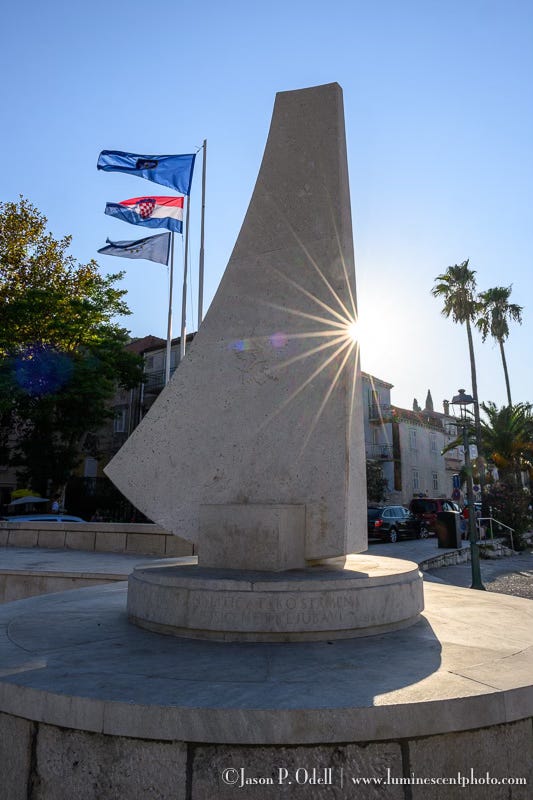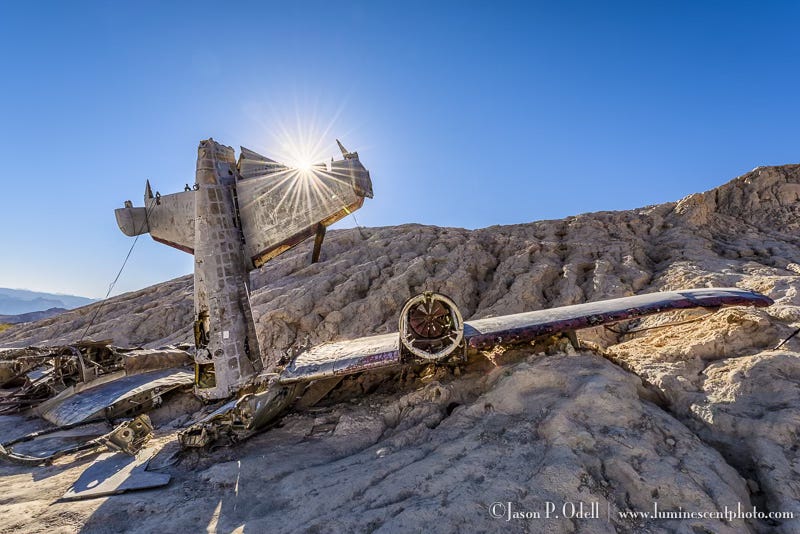If you’re an outdoor photographer, you have probably struggled with bluebird skies and a low sun. That’s a common challenge when you’re visiting somewhere and you don’t have time to be there at exactly the right time of day. Most of the time, we try to avoid getting the sun in the shot. Not only is it an exposure nightmare, but you can end up with a “hole in the sky” look or lots of annoying lens flare. But I’ve found a way to embrace it: The Starburst effect.
The Starburst effect is created by a point source of light entering your lens and getting diffracted by the aperture blades. It’s easy to do, once you know what to look for and how to set up your camera.
How to create the Starburst Effect
Use a wide-angle lens, preferably one 24mm (effective) or wider. The wider the lens, the easier it is to create the effect
Stop the lens down to a small aperture (usually ƒ/16 or more)
If the sun is in your shot, try framing the photo so that the sun is right at the edge of a solid object. This intensifies the look.
For extremely back-lit shots (which often occurs when shooting into the sun), use exposure bracketing and consider using HDR (bracketing) techniques in post.
I personally love this effect when I'm working with a scene that contains the sun, or twilight shots with street lamps. Not every lens does well with creating starbursts, though. A lot will depend on the following factors:
Front element design: Lenses with rounded/curved front elements do MUCH better than those with flat ones. The Nikon 24-120 f/4 VR (F-mount) has a flat front element, and it makes for poor starbursts. On the other hand, a lens like the Nikon 16-35mm f/4 VR (F-mount) has a curved front element, and it produces excellent starbursts.
Lens aperture: Use a small aperture (large ƒ-number) to produce a good starburst. The number of aperture blades in your lens will also affect how starbursts are rendered. If you're shooting at twilight, you'll definitely want to use a tripod to prevent camera shake during slow exposures while stopped-down.
Focal length: The wider the lens, the more likely it is to produce a good starburst effect. For 35mm format cameras, this usually happens at 24mm or wider. With APS-C format (or smaller) cameras, you'll need to use even shorter focal lengths, such as 10-15mm. Some of the easiest starbursts I've ever created came from using a 16mm fisheye lens!








I love how you’ve turned what might frustrate other photographers into something magical. The starburst isn’t just accepted, it’s invited. It speaks to your eye, your intention, and the way you use everything nature offers to make your images glow.
Interesting. I’m booked for a half day trip to Sedona and Antelope Canyon. Your NV capture aptly demonstrates that the starburst effect would be useful for desert photography. Thanks.